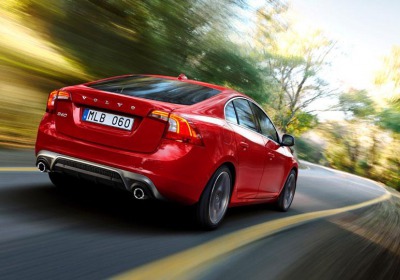Volvo's autonomous car is boring enough to work
Fri, 16 May 2014
Volvo is a bit of an enigma. The Chinese-owned Swedish automaker releases a stunning concept from time to time, and we're often pleasantly surprised by the Volvos that enter out test fleet, but it hasn't done much to generate sales numbers -- or buzz -- in the North American market.
Maybe that's because Volvo is too busy looking down the road to focus on selling cars now. Their reinvention strategy involves taking an $11 billion cash infusion from Geely and investing it in restyled sheetmetal, the Drive-E four-cylinder engine family and automotive autonomy.
Yes, autonomy. Self-driving cars and all that. Tech giant Google is working on them, and the world's major automakers and suppliers are eager to get in on the action, but Volvo thinks it can bring a self-driving car to market by 2017.
It's only surprising until you realize that Volvo has been tinkering with the technology (and seeing varying degrees of success) for years. It has developed cars that can park themselves, keep an eye out for pedestrians and cyclists and monitor driver alertness with infrared sensors. Tying it all together into a car that can, at times, drive itself is the logical next step; dealing with regulations and public perception are probably the biggest obstacles to adoption.
Tim Stevens hopped into a nearly stock-looking S60 and took the tech for a test drive -- er, ride -- and his entire account at Cnet is worth a read. It's a good reminder that many of our cars already sport the features necessary to drive themselves, and a first-person account of how normal letting the car do the driving feels.
Stevens described the ride as “a bit of a boring, underwhelming loop around the city for the most part. But then, driving on the highway should be boring. At least in this case the driver was free to do whatever he liked -- reading a book, checking in on Facebook, or even fielding a constant stream of inane questions coming from a journalist seated to his right.”
Remember: You're reading Autoweek because you find cars exciting and the act of driving stimulating. You're in the minority here; the vast majority of drivers merely want to get from Point A to Point B in the most efficient way possible. Why not nap on the way to work? Catch up on your favorite show when you're trapped in gridlock? Hop out of your car and let it tuck itself away rather than navigating a labyrinthine parking structure?
Even the most hardcore of gearheads has moments of weakness -- say, after a long day at the office -- where they'd rather let their car take the wheel and pilot them home.
Then there's the safety aspect, which Volvo says is key to its autonomy push. According to Stevens, “it's part of a larger effort, something the company calls Vision 2020. Within six years, Volvo wants its cars to be so safe that not a single owner is killed or seriously injured. Not one. Worldwide. Nobody's mandating this policy, no government would pass legislation requiring completely crash-proof cars. This is all on Volvo's shoulders, and that means fixing the most dangerous part of any car on the road: the driver.”
Ambitious? Certainly, but widespread adoption of this technology seems inevitable, so you might as well read up on it.
By Graham Kozak

